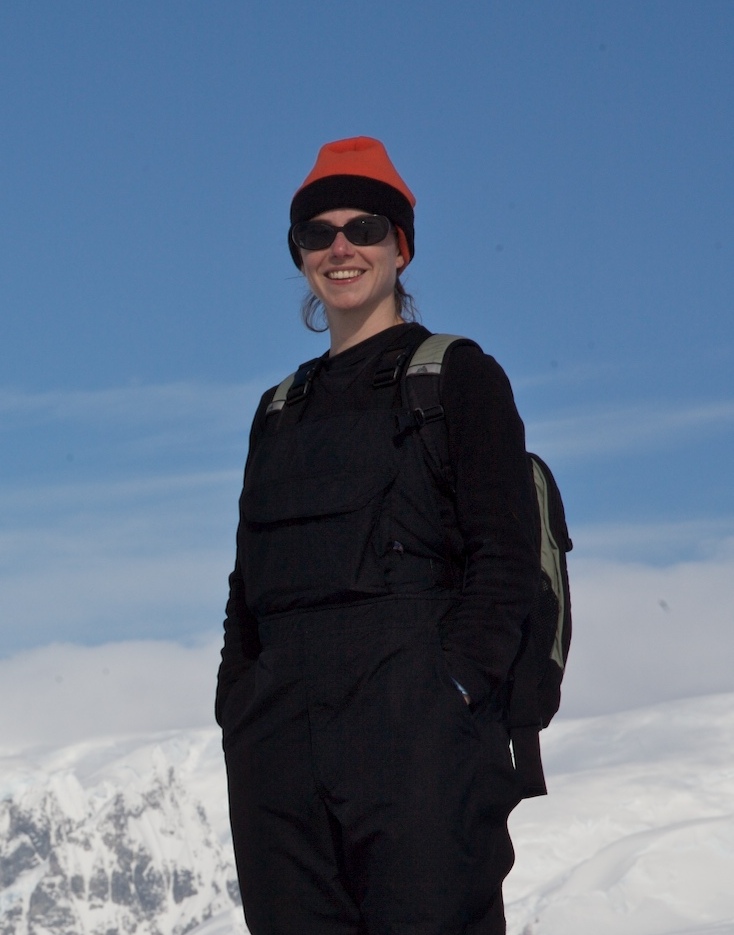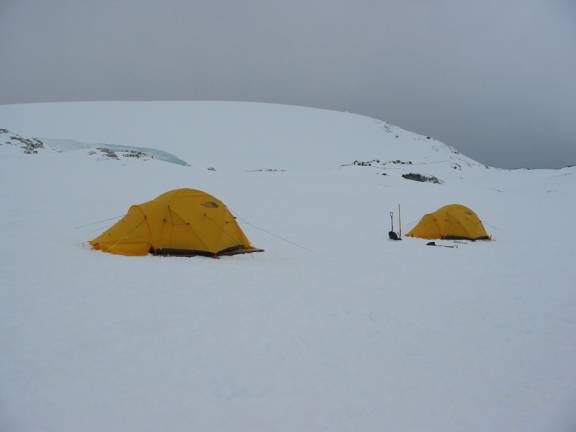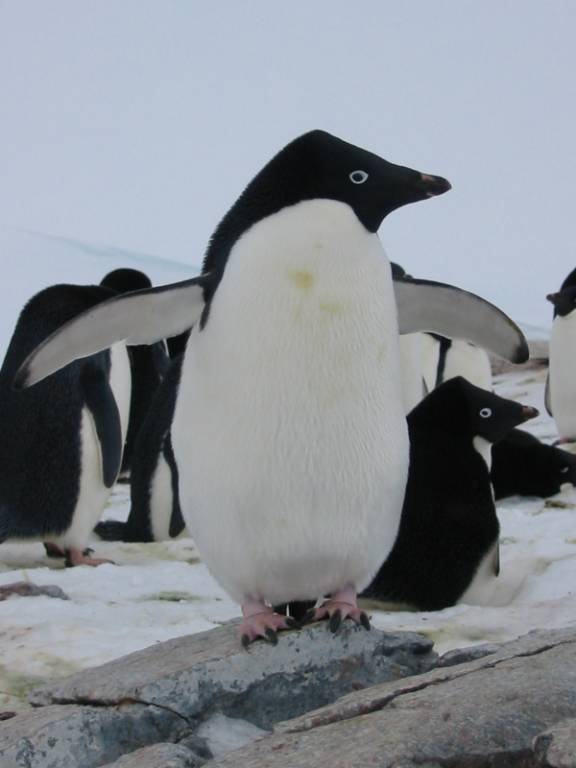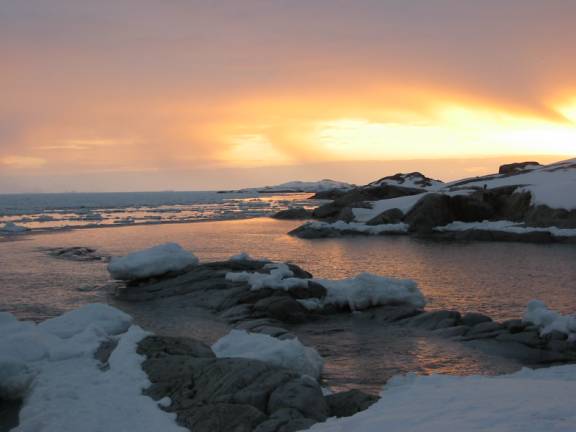Heather Lynch
Heather is no longer a member of the Fagan lab, but remains an important collaborator on several projects.Heather is now an Associate Professor in Ecology and Evolution at SUNY Stony Brook
Research
I am currently working on three projects which are united by my general interest in uniting statistics and mathematics with conservation biology.
Population dynamics of Antarctic Penguins
The Lynch Lab, in collaboration with the Fagan Lab, Ron Naveen and Oceanites, Inc., is working on a long-term monitoring program called the Antarctic Site Inventory to assess the population trends of breeding birds in the Antarctic, particularly the three Pygoscelis penguins that breed along the Antarctic Peninsula. The Pygoscelis penguins, the Adélie Penguin (Pygoscelis adeliae), Gentoo Penguin (P. papua), and the Chinstrap Penguin (P. antarctica) all breed along the Antarctic Peninsula, but their slightly different ecological niches suggest different predictions for their future under a climate warming scenario. Currently, these three penguins are undergoing rapid population changes, with spatially variable increases and decreases that complicate the overall picture of population trends. The long-term data collected as part of the Antarctic Site Inventory is particularly important, now that Antarctic Treaty parties have begun to adopt site specific management guidelines for key visitor locations. We recently reported (In review) a new breeding population of Gentoo Penguins in the Yalour Islands (Antarctic Peninsula), which documents the southernmost-known breeding colony of this species. We also continue to document Gentoo Penguins’ range expansion and population increases throughout the Antarctic Peninsula.
The primary focus of my research in the Fagan Lab is to utilize Hierarchical Bayesian models to understand the spatial and temporal dimension of these population changes. When I’m not working on that, I am doing field work with Oceanites in Antarctica. In Oct-Nov of 2006 and 2007, I worked at the temporary field camp at Petermann Island working on a 5 year study of Adelie and Gentoo penguin demography. I have also done penguin census work on the National Geographic Endeavour, the Antarctic commercial cruise vessel operated by Lindblad Expeditions.
Estimation of maximum population growth rates
Previous efforts to use the Euler equation to estimate maximum population growth rates (r max) have used simplified models of survivorship that neglect differences in survivorship among species. In particular, several recent reviews have used either an exponential model of survivorship or a step-function model in which all individuals live until a fixed age of death. I developed a flexible alternative based on the beta distribution that includes previous models as special cases. Using a compiled dataset of mammalian survivorship curves from life table data, I used this model to explore the influence of survivorship shape and scale on the estimation of maximum growth rates (Lynch and Fagan, In Press in Ecology).
Dendritic River Networks
Most of ecological theory has been developed for the two-dimensional world in which, for all practical purposes, most animals live. I am working on a number of projects that explore the impact of dendritic geometry (river systems, for example) on populations that are constrained to live inside them. Using a number of fish population datasets, I am interested in understanding how “branchiness” impacts biodiversity and extinction risk.
Publications *
- Lynch, H.J., E. H. Campbell Grant, R. Muneepeerakul, M. Arunachalam, I. Rodriguez-Iturbe, and W. F. Fagan. 2011. How restructuring river connectivity changes freshwater fish biodiversity and biogeography. Water Resources Research 47, W05531, doi:10.1029/2010WR010330. READ MORE
- Lynch, H.J., S. Zeigler, L. Wells, J. D. Ballou, and W.F. Fagan. 2010. Patterns of survivorship in captive mammalian populations and their implications for estimating population growth rates in data-poor situations. Ecological Applications. 20: 2334-2345.
- Lynch, H.J. and W.F. Fagan. 2009. Survivorship curves and their impact on the estimation of maximum population growth rates. Ecology 90: 1116-1124..
- Muneepeerakul, R., E. Bertuzzo, H.J. Lynch, W.F. Fagan, A. Rinaldo, and I. Rodriguez-Iturbe. 2008. Neutral Metacommunity Models Predict Fish Diversity Patterns in Mississippi-Missouri Basin. Nature 453: 220-223.
- Lynch, H.J., R. Naveen, and W.F. Fagan. 2008. Censuses of Penguins, Blue-Eyed Shags, and Southern Giant Petrel Populations in the Antarctic Peninsula, 2001-2007. Marine Ornithology 36: 83–97.
- Naveen, R., H.J. Lynch, and W. Fagan. 2008. Antarctic Site Inventory: 1994-2008, Information Paper submitted by the United States to the XXXIst Antarctic Treaty Consultative Meeting in Kiev, Ukraine.
- Lynch, H.J., S. Hodge, C. Albert, and M. Dunham. 2008. The Greater Yellowstone Ecosystem: Challenges for Regional Ecosystem Management. Environmental Management 41: 820-833.
- Fagan, W.F., E.H.C. Grant, H.J. Lynch, and P.J. Unmack. 2007. Riverine Landscapes: Ecology for an Alternative Geometry. Proceedings of the Workshop on Spatial Ecology. January 7-10, 2005, University of Miami, Coral Gables, Florida.
- Lynch, H.J., R.A. Renkin, R.L. Crabtree, and P.R. Moorcroft. 2006. Insect-fire interactions in Yellowstone National Park: The influence of historical mountain pine beetle (Dendroctonus ponderosae) activity on the spatial pattern of the 1988 Yellowstone fires. Pages 109-118 in A. Wondrak Biel, ed., Greater Yellowstone Public Lands: A Century of Discovery, Hard Lessons, and Bright Prospects. Proceedings of the 8th Biennial Scientific Conference on the Greater Yellowstone Ecosystem. October 17-19, 2005, Mammoth Hot Springs Hotel, Yellowstone National Park, Wyo.: Yellowstone Center for Resources.
- Lynch, H.J., R.A. Renkin, R.L. Crabtree, and P.R. Moorcroft. 2006. The influence of previous mountain pine beetle (Dendroctonus ponderosae) activity on the 1988 Yellowstone fires. Ecosystems 9, 1318-1327.





